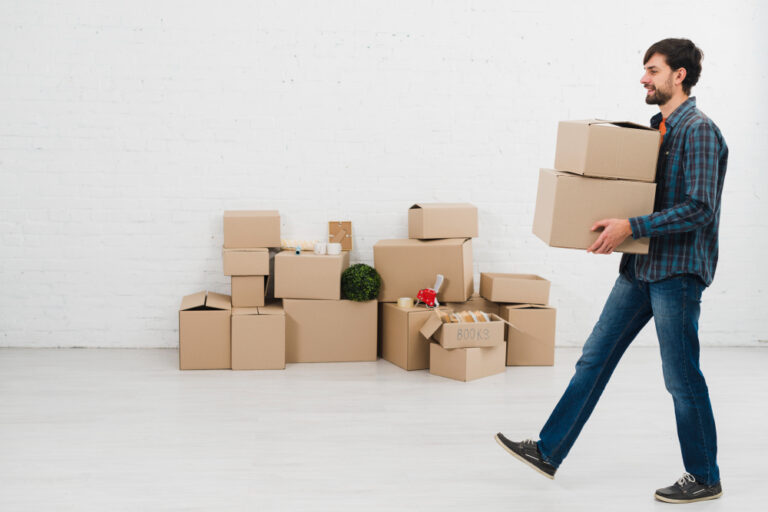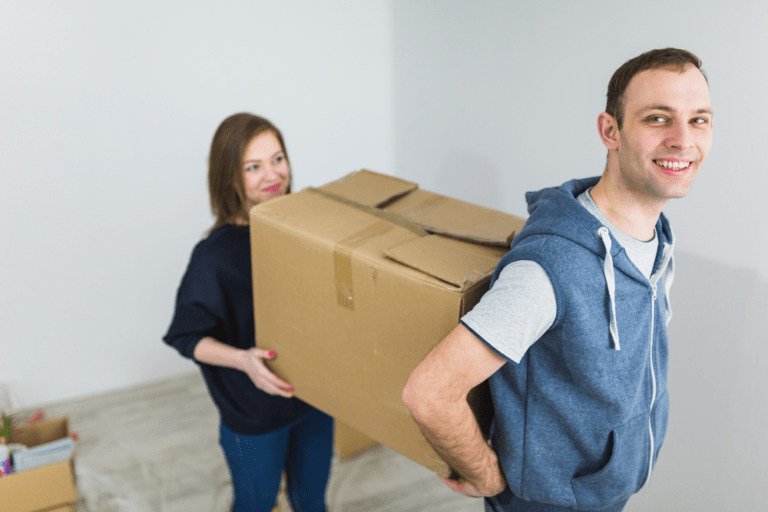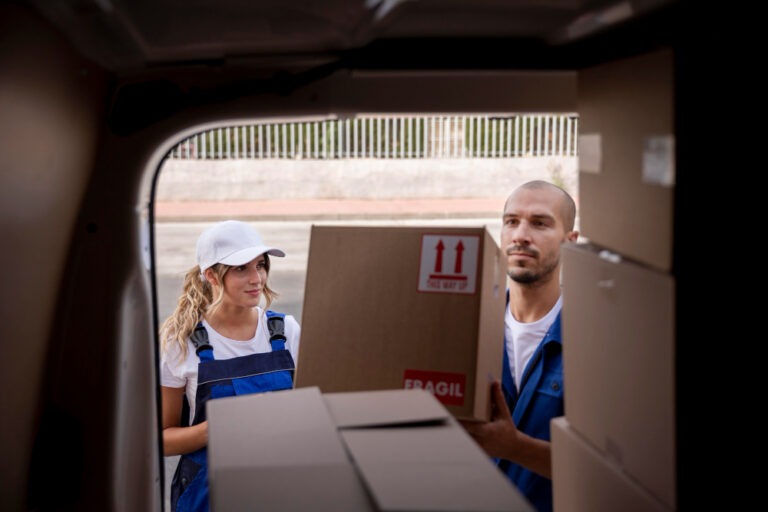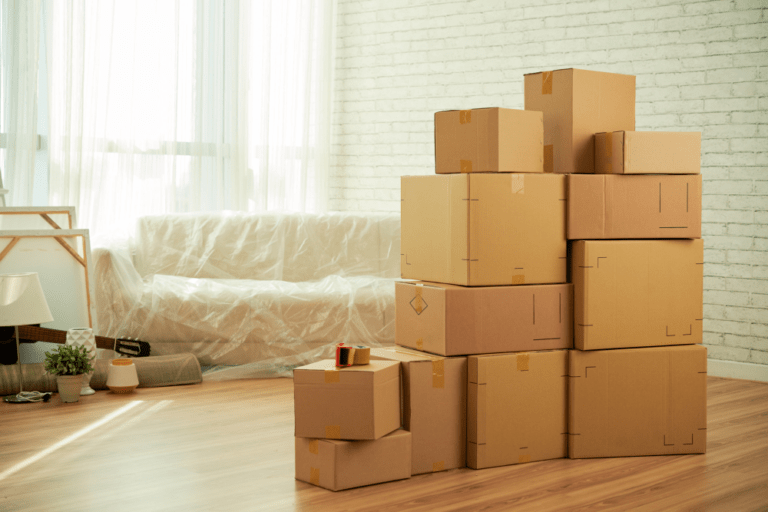Moving to a new home can be both an exciting and challenging experience, and one of the greatest challenges lies in safely packing and moving your electronics. These items are often expensive, fragile, and crucial to daily life.
For residents in Vero Beach planning a move, we’ve compiled a list of tips to ensure your electronics reach their new home safely and securely.
16 Tips to Safely Pack Your Electronics for a Move in Vero Beach

Moving electronics requires careful planning and packing. Here are fifteen detailed packing tips to help you accomplish that:
1. Backup Your Data
Before you begin packing your electronics, make sure to back up all your important data. This includes files on your computer, photographs on your phone, or any other important data on your devices. A backup ensures that your essential data is secure even in the worst-case scenario.
2. Gather Necessary Packing Supplies
Acquire the right packing supplies and materials for your electronics to ensure maximum protection. These packaging supplies may include bubble wrap, packing tape, paper, and sturdy boxes.
For smaller electronics, consider using their original packaging if it’s available, as these were specifically designed to protect the item during transportation. If the original packaging is unavailable, choose box sizes that best fit the electronic device without too much space.
3. Label Your Cables and Accessories
Each of your electronic devices comes with cables and accessories that require careful handling during the move. To avoid confusion later, label each cable and accessory according to the device it belongs to. This will make setting up your devices in your new home much easier.
4. Use Anti-Static Bubble Wrap
Electronics are sensitive to static electricity, which can cause damage. Use anti-static bubble wrap or packing materials when packing electronics. Regular bubble wrap generates static electricity, which can harm your devices.
5. Take Photos Before Disassembling
Before disassembling any electronics, take photos of the setup. This will be a reference when setting up the device at your new home, especially for complex setups like home entertainment systems.
6. Use Colored Stickers for Easy Identification
Use different colored stickers for different types of electronics or rooms. For example, all living room electronics can have a blue sticker, while office electronics have a red one. This color-coding system will make unpacking and setting up in your new home more efficient.
7. Pack Devices in a Climate-Controlled Environment
Electronics can be sensitive to extreme temperatures and humidity. If possible, pack your electronics in a climate-controlled environment and consider choosing a moving service that offers climate-controlled transportation.
8. Use Original Packaging When Available
The original packaging of your electronics is designed to provide maximum protection. If you still have the original boxes and packaging, use them.
9. Keep Screws and Small Parts in a Separate Bag
When disassembling electronics, keep all screws and small parts in a separate, clearly labeled bag. This will prevent you from losing these essential parts during the move.
10. Fill Empty Spaces in the Box
When packing electronics in a box, fill any empty spaces with packing materials. This will prevent the item from moving around during transportation.
11. Seal Boxes Properly
Ensure that all boxes containing electronics are properly sealed with packing tape. This will provide additional protection during the move.
12. Load Electronics Onto the Moving Truck Last
Electronics should be among the last items loaded onto the moving truck. This will limit their time in potentially unfavorable conditions and reduce the risk of damage during transit.
13. Use Padding Between Electronics
When packing multiple electronics in a box, use paddings such as bubble wrap or packing paper between each item. This will prevent them from bumping against each other and causing damage during the move.
14. Mark Boxes as Fragile
Mark all boxes containing electronics as ‘Fragile.’ This will alert anyone handling the boxes to do so with extra care. It’s also helpful to indicate which side of the box should face up.
15. Remove Lithium Ion Batteries Before Packing
When preparing to move electronic devices, remember to remove any lithium-ion batteries. These batteries can be volatile if damaged, so consider carrying them separately or packing them in protective cases.
16. Consider Professional Packing Services
If you need more clarification about safely packing your electronics, consider hiring professional services. Certified packing experts, like those at Friends Moving, have the specific expertise and materials to securely pack your electronics for the move, ensuring your items are safe and well-protected.
At Friends Moving, we provide full-service packing to ensure your precious items reach their new home safely.
Read more: The Cost of Moving in Vero Beach, FL
Reinstalling Your Electronics in Your New Home

Once you’ve successfully moved and packed your electronics, the next step is to carefully reinstall them in your new home. This process involves extending your setup, protecting your devices, cautious unpacking, and organized installation.
Extend and Protect Your Setup
Upon moving into your new home, you may realize that you need to extend your electronic setup to better fit the new space. This might involve purchasing new extension cords or power strips to ensure all your devices can be powered in their new locations.
Consider investing in surge-protected power strips to protect your devices’ power supply, particularly for computers or other sensitive electronic equipment. These devices safeguard your electronics from sudden power spikes, extending their lifespan and preventing costly repairs or replacements.
Unpack Carefully and Methodically
Unpacking your electronics in the new location requires care and organization. You should:
- Unpack in the Correct Room: Start by unpacking the boxes in the rooms where the devices will be installed. This will help you avoid unnecessary movement of the devices and minimize the risk of damage.
- Check Your Inventory: As you unpack, carefully go through all your packing materials to find small items like cables or screws. If you’ve made an inventory of your boxes, check that everything you expect is in the box.
- Don’t Discard Packing Materials Too Soon: Hold on to your packing materials until everything is up and running properly. It’s easy to accidentally throw away small but crucial components like a computer mouse or a remote control.
Reinstall Your Devices
Reinstalling your devices involves unpacking, setting up, testing, and connecting your electronics. Follow these steps for a smooth reinstallation process:
- Unpack One Item at a Time: Start by unpacking the device with the most cable connections, such as your TV or computer.
- Identify and Unpack Associated Cables: Only unpack the cables associated with that device at this stage. Use the colored dots, labels, and any photos you took during packing to guide you.
- Set Up and Test: After setting up the device and connecting the cables, test it to ensure it works.
- Repeat for Each Device: Repeat the process for each item, testing each individually and then with the devices you’ve already set up. This approach allows you to troubleshoot as you go along, making it easier to identify any issues.
Secure and Tidy Up Your Setup
After all your devices are set up and working, it’s time to tidy up your setup.
- Store Electronics: Once your devices are set up, take measures to store your electronics safely and organized. This could involve securing your cables with zip ties or cable management solutions to avoid tangling. This will keep everything neat and prevent your cables from tangling.
- Relax and Enjoy: Now that everything is in place and working, it’s time to kick back, relax, and enjoy your favorite shows or games in your new home!
By taking a careful and organized approach to reinstall your electronics, you can ensure a smooth transition and quickly make your new house feel like home.
Common Moving Mistakes and How to Avoid Them

Moving can be a complex process, and it’s easy to overlook certain aspects in the rush of packing and organizing. Unfortunately, these oversights can lead to unnecessary stress and complications. Here are some of the most common moving mistakes and how you can avoid them:
Waiting Until the Last Minute to Pack
- Mistake: Procrastination is a common pitfall when it comes to moving. Waiting until the last minute to pack can lead to rushed packing, misplaced items, and forgotten essentials.
- Solution: Start packing as early as possible. Begin with the items you use less frequently and gradually work towards everyday items as moving day approaches. This strategic packing makes you more organized and reduces the chances of forgetting or misplacing items.
Underestimating the Amount of Packing Materials Needed
- Mistake: It’s easy to underestimate the amount of packing materials you’ll need. Running out of boxes, tape, or bubble wrap in the middle of packing can cause unnecessary delays.
- Solution: Always buy more packing materials than you think you’ll need. Remember, it’s better to have too many than too few. If you’re unsure how much to buy, consult with a professional moving company like Friends Moving who can provide guidance based on their experience.
Neglecting to Sort and Declutter
- Mistake: Packing everything without sorting or decluttering first can incur unnecessary costs and effort. Moving is a great opportunity to eliminate items you no longer need or use.
- Solution: Before packing, sort through your belongings and declutter. Donate, sell, or discard items that you no longer need or want. This will make your move easier and help you start fresh in your new home.
Forgetting to Label Boxes
- Mistake: Many people forget to label or label their boxes correctly. This can lead to confusion when unpacking, making the process take much longer than necessary.
- Solution: Always label your boxes clearly. Include information about the contents and which room they belong in. You can also consider using a color-coding system for added organization.
Not Preparing an Essentials Box
- Mistake: Upon arriving at your new home, you might realize that some items are immediately necessary, such as toiletries, a change of clothes, or important documents. If these are buried in various boxes, you’ll have difficulty locating them.
- Solution: Pack an essentials box or carry-on bag with everything you’ll need for the first day or two in your new home. This should include items like toiletries, medications, a change of clothes, important documents, and basic kitchen items.
Not Considering Furniture Shipping Needs
- Mistake: When moving, it’s not just about the electronics. Large items like furniture also need careful attention. Failing to properly pack and ship furniture can lead to damage.
- Solution: Consider hiring professional services catering to electronics and furniture for a comprehensive solution.
By being aware of these common moving mistakes and avoiding them, you can make your move much smoother and less stressful.
And remember, professional moving companies like Friends Moving are always available to help guide you through the process and ensure a successful move.
Read more: Preparing for a Long-Distance Move from Vero Beach, FL
Services Offered by Friends Moving

At Friends Moving, we understand that each move is unique, and we’re dedicated to providing a range of services tailored to meet your specific needs. Here’s a closer look at some of the main services we offer:
Residential and Commercial Moving
Whether moving to a new home or relocating your business, we’ve got you covered. Our team of professionals is skilled in handling all types of residential moves, from apartments and condos to multi-level houses.
We also offer comprehensive commercial moving services to minimize downtime and keep your business running smoothly.
- Full-Service Moving: This comprehensive option includes packing, loading, transporting, unloading, and unpacking. We handle everything, so you can focus on settling into your new space.
- Specialty Moving: Our team is experienced in handling specialty items, including pianos, antiques, artwork, and more. We have the equipment and knowledge to move these items safely and securely.
Senior and Family Moving
We recognize the unique challenges that come with moving seniors and families. Our team is trained to handle these situations with extra care and sensitivity.
- Senior Moving: We understand the emotional and physical challenges accompanying a move for seniors. We aim to make the transition smooth and stress-free, handling all the heavy lifting and logistics.
- Family Moving: Moving with children can be a stressful experience. Our team is here to help make the process easier for everyone involved. We can help with packing, organizing, and setting up in your new home to ensure a seamless transition for your family.
Nationwide Moving
If you’re making a long-distance move, Friends Moving can help. We have the resources and expertise to handle nationwide moves, ensuring your belongings are safely transported to your new home, no matter how far away it may be.
Storage Options
Sometimes, you may need to store your belongings during a move. Friends Moving offers secure, climate-controlled storage solutions. Whether you need short-term storage while you get settled or long-term storage for items you’re not ready to move, we have options to fit your needs.
With Friends Moving, you can trust that your move will be handled with the utmost care and professionalism. We pride ourselves on our customer service and commitment to making every move successful.
Conclusion
Moving doesn’t have to be stressful. With careful planning, safe packing of electronics, and avoiding common mistakes, you can ensure a smooth transition to your new home. At Friends Moving, we’re dedicated to making your move as straightforward and stress-free as possible.
Each move is unique and comes with its challenges. We’re here to provide expert advice, professional moving services, and personalized care.
We’re ready to assist, whether you’re moving across town or the country, from a small apartment or a large family home. We respect and care for your belongings as if they were our own.
Friends Moving is committed to your satisfaction, offering customized services to suit your needs. So, why wait? Contact Friends Moving today to experience the difference and start your hassle-free moving journey.
Let us be a part of your moving story and help you start the next chapter of your life with confidence.
FAQs
It’s generally a good idea to start packing a few weeks before your move. Begin with items you use less frequently and save everyday items for closer to the moving date.
Use quality packing materials, including bubble wrap and packing paper. If possible, pack electronics in their original boxes. Label boxes clearly, and don’t stack heavy items on electronics boxes.
Label cords and accessories, and take pictures before disconnecting them. Keep small parts in a separate, labeled bag.
Your essentials box should include items you’ll need immediately after your move. This could include toiletries, a change of clothes, basic kitchen items, medications, and important documents.
Yes, Friends Moving offers full-service packing, including help with packing electronics. Our team has the expertise to ensure your electronics are packed safely and securely.
If you don’t have the original packaging, use sturdy boxes that fit your electronics well. Fill any empty spaces in the box with bubble wrap or packing paper to prevent movement during transit.




